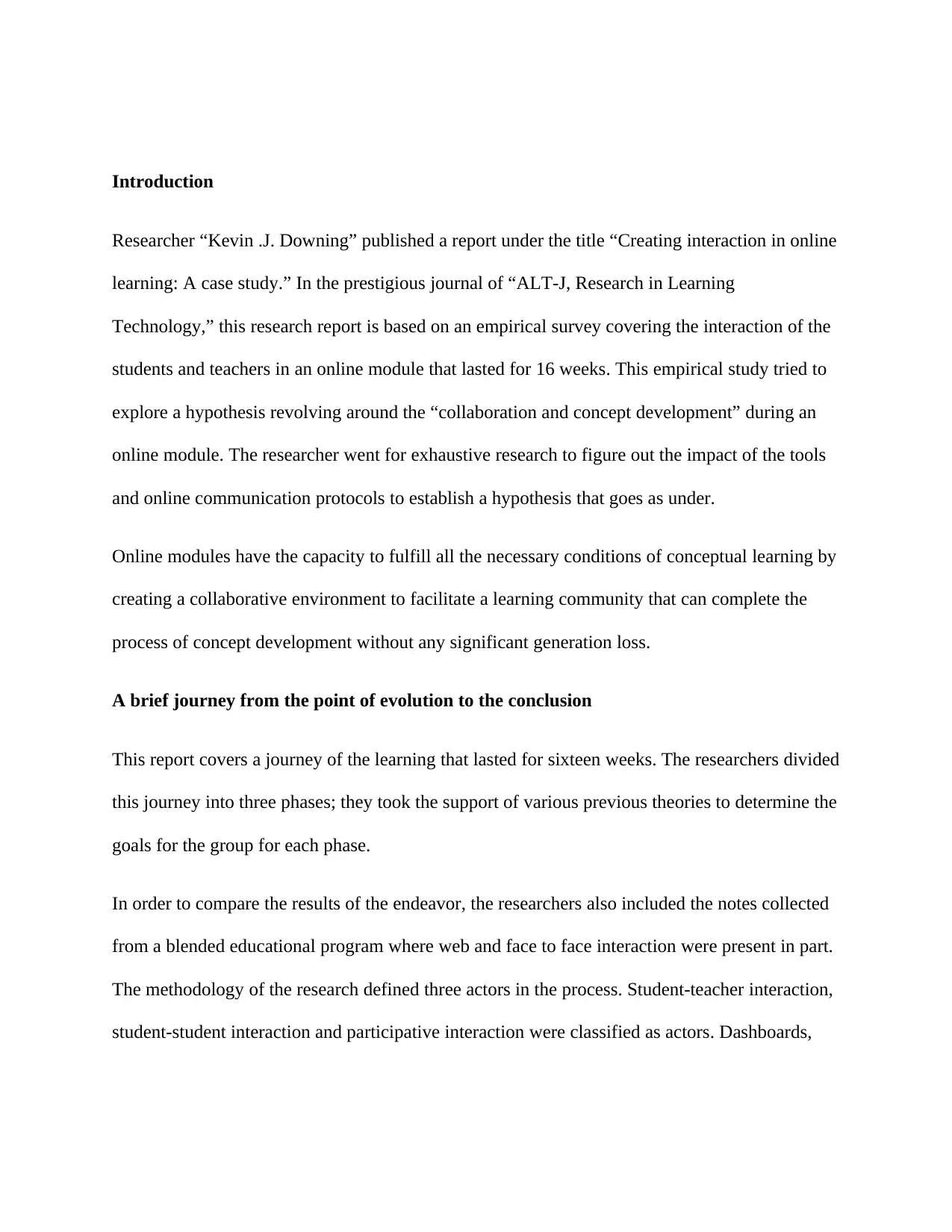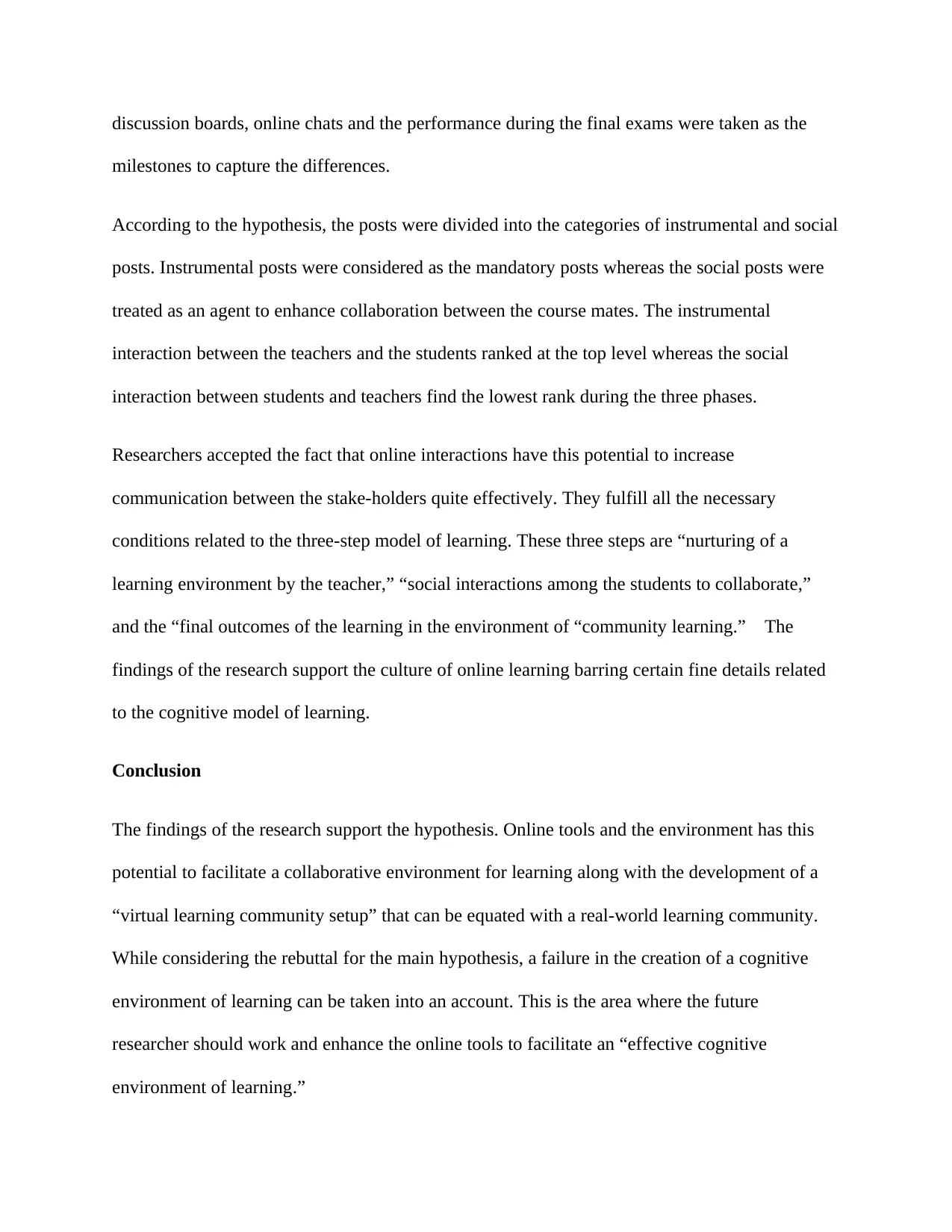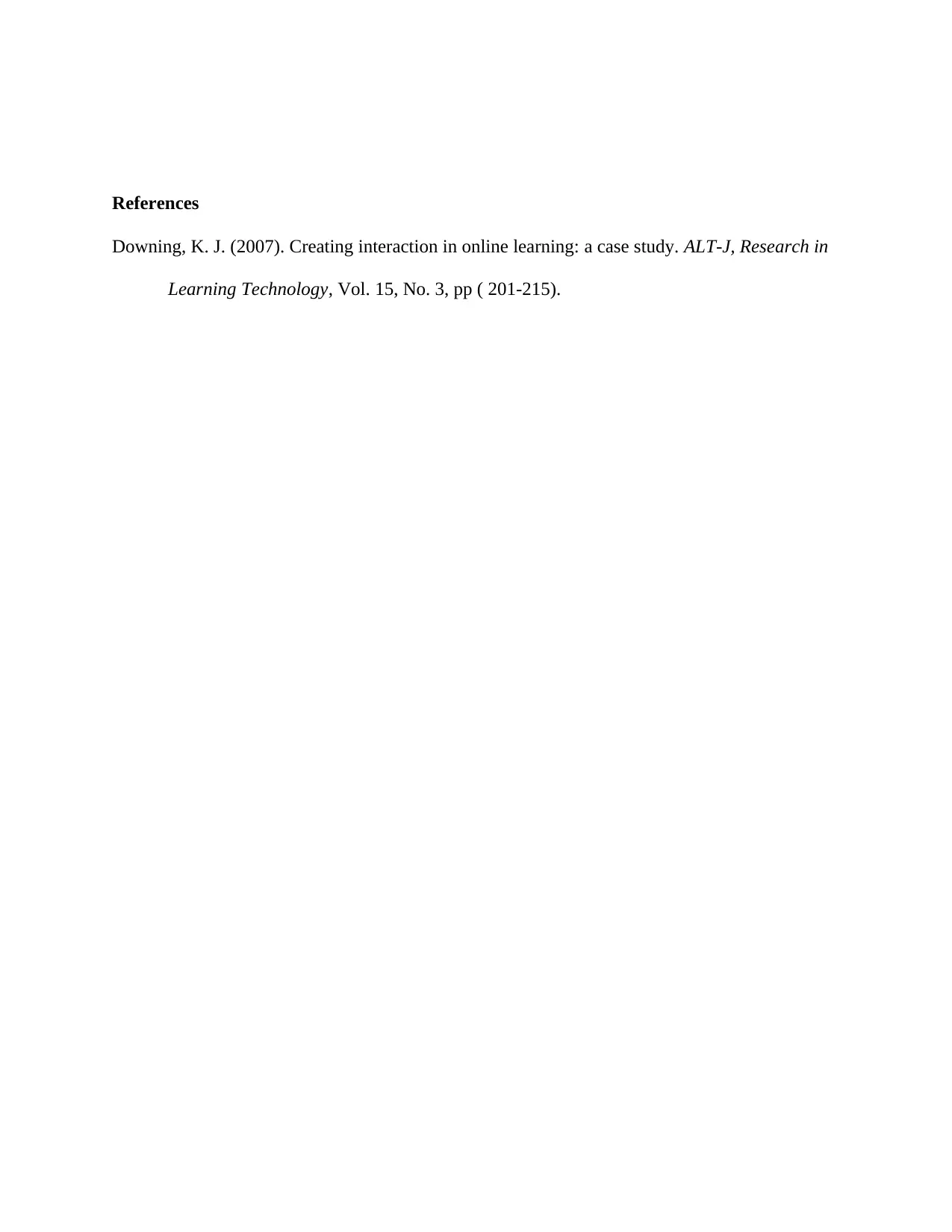Critical Review: Downing's 'Creating Interaction in Online Learning'
VerifiedAdded on 2022/08/17
|6
|604
|11
Report
AI Summary
This report presents a critical review of Kevin J. Downing's research paper, "Creating Interaction in Online Learning: A Case Study," published in ALT-J. The study investigated student-teacher and student-student interactions within a 16-week online module, exploring the impact of online communication tools on conceptual learning and collaboration. Downing's research highlights three phases of online interaction and the roles of instrumental and social posts. The findings support the potential of online environments to foster collaborative learning and virtual communities, mirroring real-world learning setups. The review also considers the limitations of online learning environments, particularly concerning the creation of a cognitive learning environment. The report's conclusion supports the hypothesis, emphasizing the potential of online tools to facilitate collaborative learning environments and virtual learning communities comparable to real-world learning settings.
1 out of 6













![[object Object]](/_next/static/media/star-bottom.7253800d.svg)